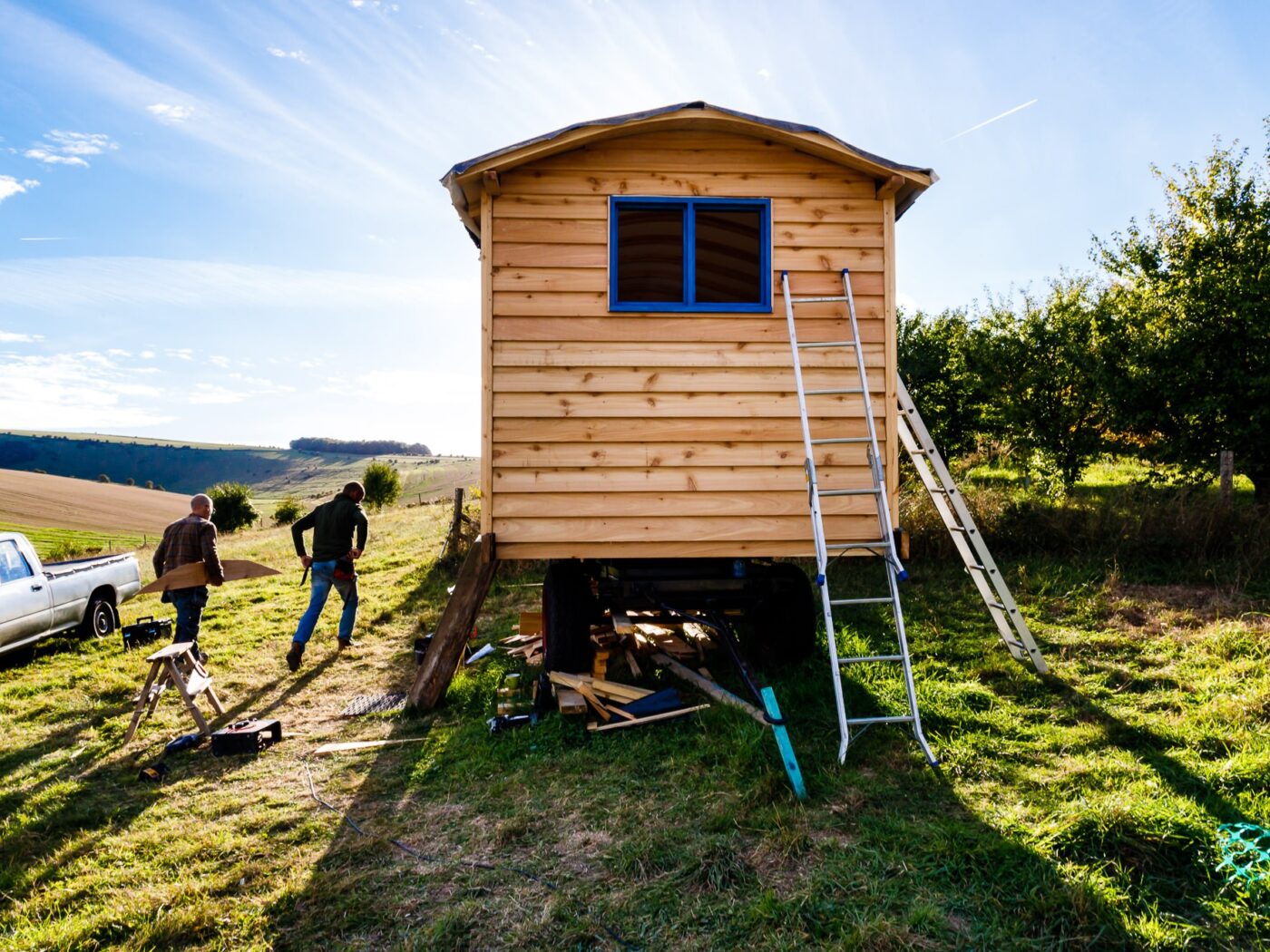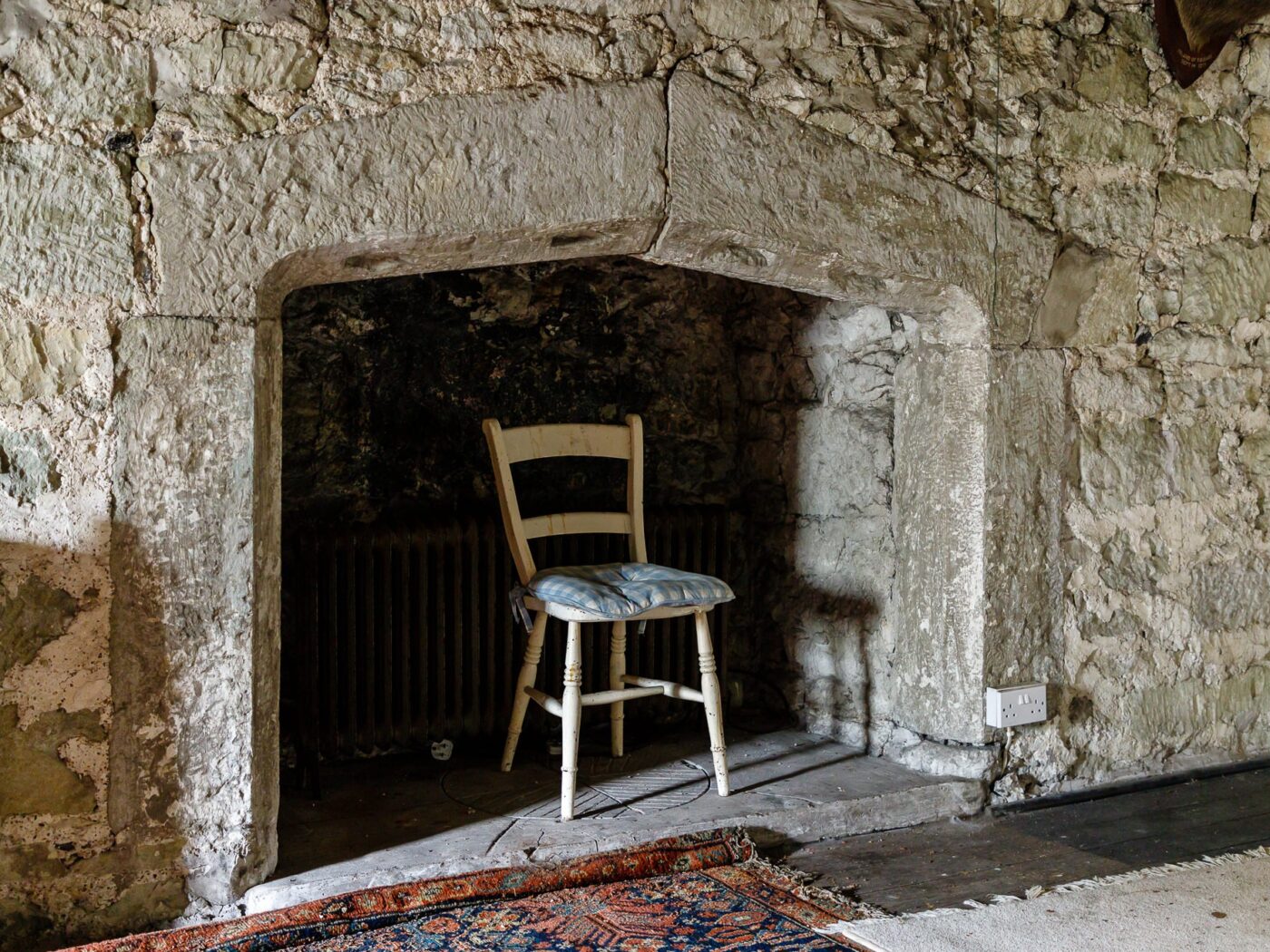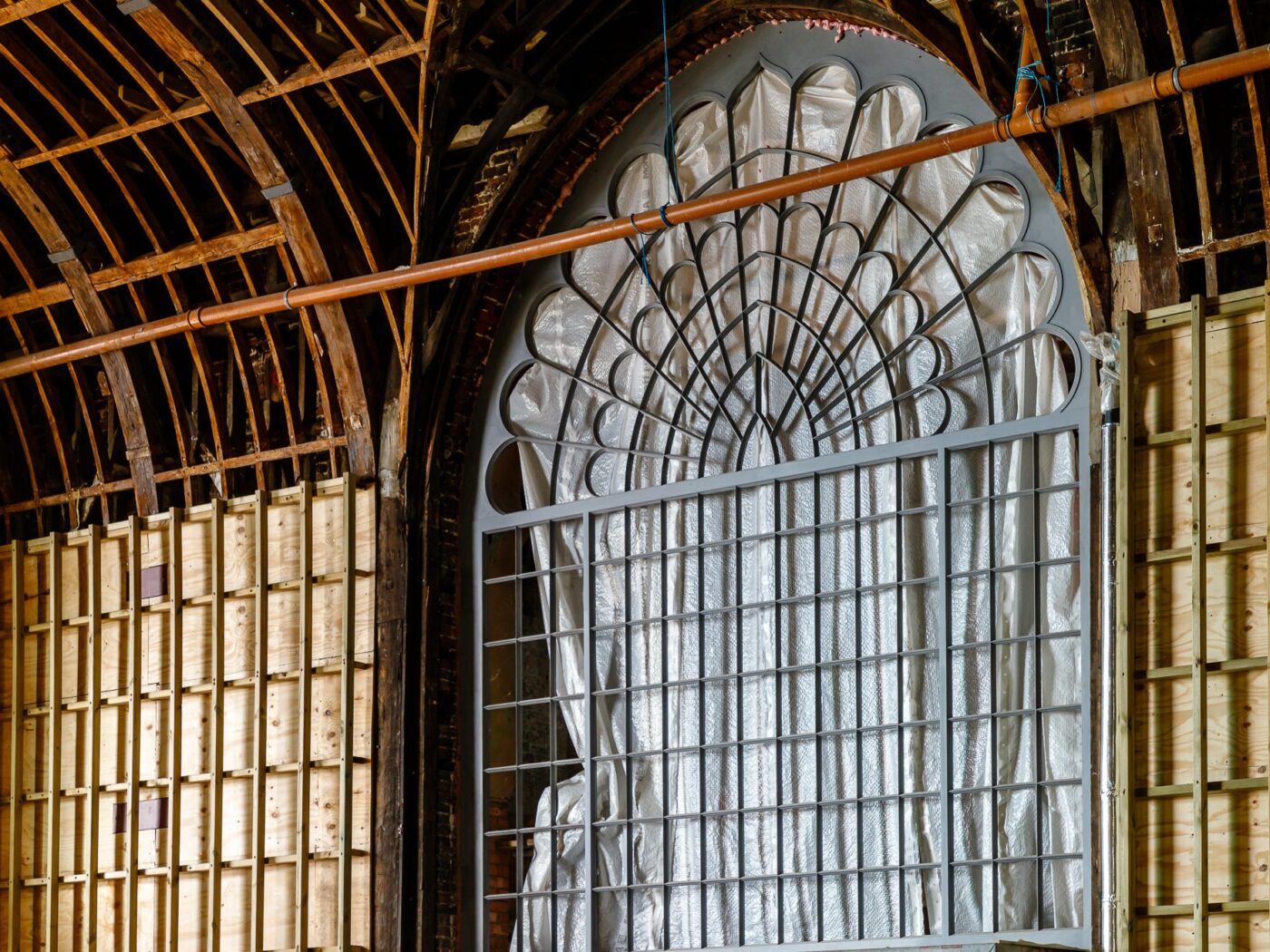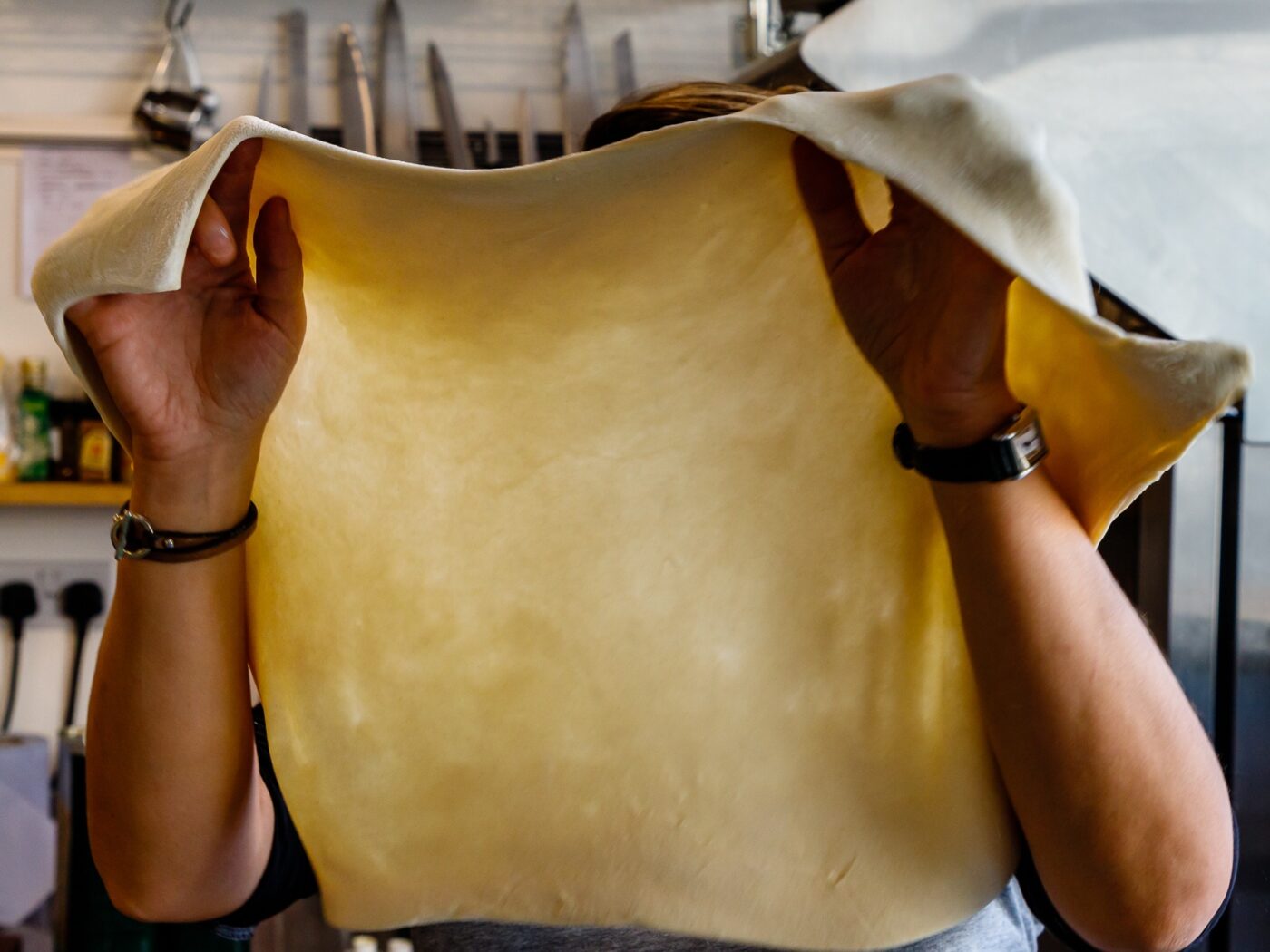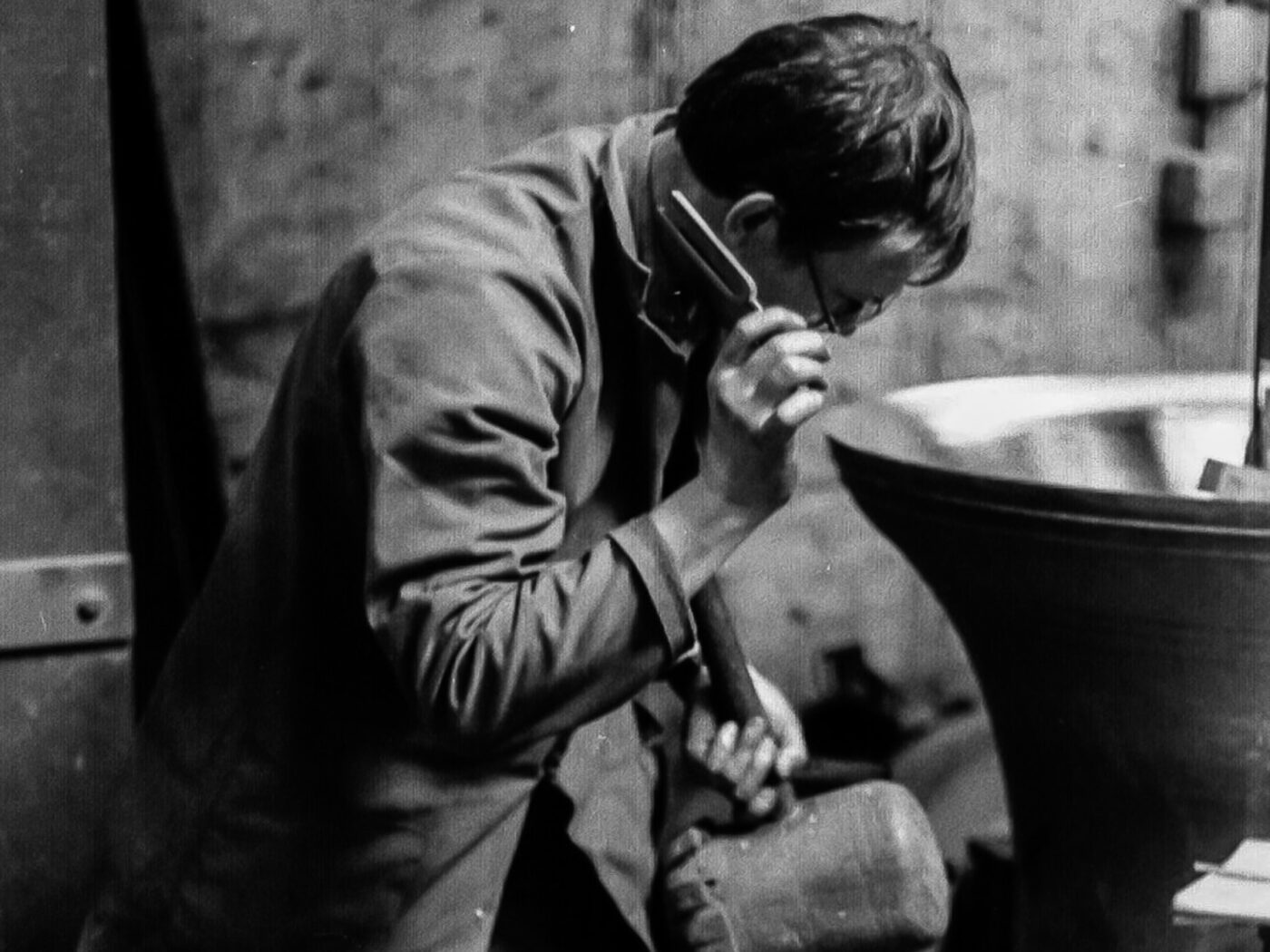Idyllic hut in a rural idyll
I’ve been photographing an old grain store on the edge of Lewes as it becomes disabled-access accommodation, located right in the midst of the South Downs National Park. The South Downs Way, the footpath that spans the length of the Park for 100 miles from Winchester to Eastbourne, runs along the ridge in the background of this photo.
Next to the large agricultural building, a little dwelling has sprung up as well. I have been watching this shepherd’s hut take shape over the months and love the way it sits so prettily in its surroundings. On my most recent visit, the sun was low in the sky as evening approached, casting raking light across the site. This made it challenging to photograph but I was interested in the drama it created.
I had to align myself within the shadow of the hut and peer around it with my camera to catch the workmen. You can find more photographs of this lovely project here.
My talk went well at the Lewes History Group last week. I have another one coming up, this time at the Paddock Arts Studios (Paddock Lane, Lewes, BN7 1TW at 3pm). I will be speaking about my project documenting the transition of the old industrial Harvey’s Depot into a state-of-the-art cinema. If you are nearby on the 10th November, please join us.
If you have a building project, workplace or event that you are thinking of photographing, please get in touch.
